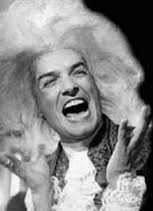Bright light therapy (30min/day in the morning, for 4 weeks, 10,000 lux, 40-75cm from eyes) showed significantly increased functional connectivity between each node of the frontoparietal network.
Here is the affordable $39.99 device they used in the study: Verilux HappyLight
“Each subject in the experimental group had a 10,000-lux white light unit, which was the commercial 6.5 “W × 8.5” H × 4.5” D in. HAPPYLIGHT® LUCENT™ VT22 (Verilux Company), gives 10,000 lux of natural and ultraviolet-free full-spectrum light.”
“Participants were provided with standardized verbal and written instructions on the use of the lightbox, including optimal placement of the unit on its desk stand 40–75 cm from the eyes, receiving a 30-min session of light therapy after being awake in the morning every day for 4 weeks, and recording the exposure time to the working lightbox on a standard self-report form.”
“The FPN is a frontoparietal system involved in various cognitively demanding tasks, mainly in actively maintaining and manipulating information in working memory, rule-based problem solving, and decision-making in the context of goal-directed behavior.”
“BLT helps to improve the intrinsic functional connectivity of the FPN and might be able to enhance relevant cognitive functions, such as memory, problem-solving, and decision-making in MDD patients.”
The Frontoparietal Network consists of:
1. PPC (L): The left posterior parietal cortex,
2. PPC (R): The right posterior parietal cortex,
3. LPFC (L): The left lateral prefrontal cortex,
4. LPFC (R): The right lateral prefrontal cortex.
Here is the frontoparietal network…

Again…

And one more…
Subclinical alterations of resting state functional brain network for adjunctive bright light therapy in nonseasonal major depressive disorder: A double blind randomized controlled trial
Abstract
Introduction
The treatment effect of bright light therapy (BLT) on major depressive disorder (MDD) has been proven, but the underlying mechanism remains unclear. Neuroimaging biomarkers regarding disease alterations in MDD and treatment response are rarely focused on BLT. This study aimed to identify the modulatory mechanism of BLT in MDD using resting-state functional magnetic resonance imaging (rfMRI).
Materials and methods
This double-blind, randomized controlled clinical trial included a dim red light (dRL) control group and a BLT experimental group. All participants received light therapy for 30 min every morning for 4 weeks. The assessment of the Hamilton Depression Rating Scale-24 (HAMD-24) and brain MRI exam were performed at the baseline and the 4-week endpoint. The four networks in interest, including the default mode network (DMN), frontoparietal network (FPN), salience network (SN), and sensorimotor network (SMN), were analyzed. Between-group differences of the change in these four networks were evaluated.
Results
There were 22 and 21 participants in the BLT and dRL groups, respectively. Age, sex, years of education, baseline severity, and improvement in depressive symptoms were not significantly different between the two groups. The baseline rfMRI data did not show any significant functional connectivity differences within the DMN, FPN, SN, and SMN between the two groups. Compared with the dRL group, the BTL group showed significantly increased functional connectivity after treatment within the DMN, FPN, SN, and SMN. Graph analysis of the BLT group demonstrated an enhancement of betweenness centrality and global efficiency.
Conclusion
BLT can enhance intra-network functional connectivity in the DMN, FPN, SN, and SMN for MDD patients. Furthermore, BLT improves the information processing of the whole brain.

Leave a Reply
Your email is safe with us.